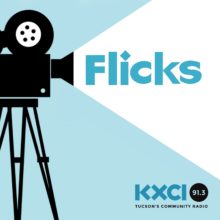

An immersive documentary shows the daily events in a series of Paris hospitals, along with incredible footage of microscopic surgeries.
De Humani Corporis Fabrica, a movie whose hard-to-remember Latin title seems designed not to attract viewers, is a fascinating documentary by Lucien Castaing-Taylor & Véréna Paravel. They got the world’s attention in 2012 with their film Leviathan. Leviathan used innovative techniques, including tiny water-proof cameras and immersive sound design, to show the workings of a commercial fishing vessel in the North Atlantic. In their latest film, they take us inside of a number of hospitals in Paris. The title, De Humani Corporis Fabrica, is from a groundbreaking 16th century anatomy text by Andreas Vaselius. In English it means “The Fabric of the Human Body,” and if you’re interested in watching, you can search by that title.
This is not only about the body, though. We observe many doctors, nurses, staff, and patients in these hospitals, and this footage is so intimate that I wondered how they pulled it off. People have strengths and flaws, of course, but the film favors the more general day-to-day behavior that is simply part of the process, yet is rarely depicted in medical dramas. The staff are dedicated to serving patients respectfully and with an eye to the best outcomes. But they also talk frankly among themselves, and one notices how strong emotions are carefully avoided in order to serve efficiently, avoidance that can at times sound like callousness. We meet a few patients as well—there’s a man who is awake and talking while the surgeons bore holes in his head, and in another wing, a man who wanders about in his dementia until staff members carefully persuade him to return to his room. It is unfortunately no surprise to find that the hospitals are inadequately funded and understaffed. The hospital morgue is always full. Considering this fact allowed me to appreciate the work being performed as vital and amazing, despite one alarming example of incompetence during a colonoscopy.
Most remarkable are the numerous filmed surgeries and procedures, from removing a prostate gland to brain surgery, breast cancer, delivering a child via cesarian, and more. The doctors chat somewhat casually while performing these stressful tasks. Most of the time we are seeing through the microscopic cameras showing the tunnel-like insides of people with the equally tiny surgical tools used to do the complicated work. We see a lot of this incredible internal footage, and I realize some people don’t want to see this, and would not be a surgeon for that reason. In my case, though, after a short time, all the blood and organs and squishy stuff stopped bothering me. I was able to watch it long enough to attain something akin to the real-life composure required by doctors and nurses when dealing with the human body. The reality begins to seem abstract, an organic world separate from any personal association. Then, if in the midst of this hidden realm, we think of the actual people on the operating table, a profound sense of wonder can result.
In the finale, we go to a dance club where the doctors go after work. As Gloria Gaynor sings “I Will Survive,” the camera slowly pans across a huge painting on the walls, featuring a wealth of symbolic medical imagery.
De Humani Corporis Fabrica, The Fabric of the Human Body, is as precise as the surgeries in it.






